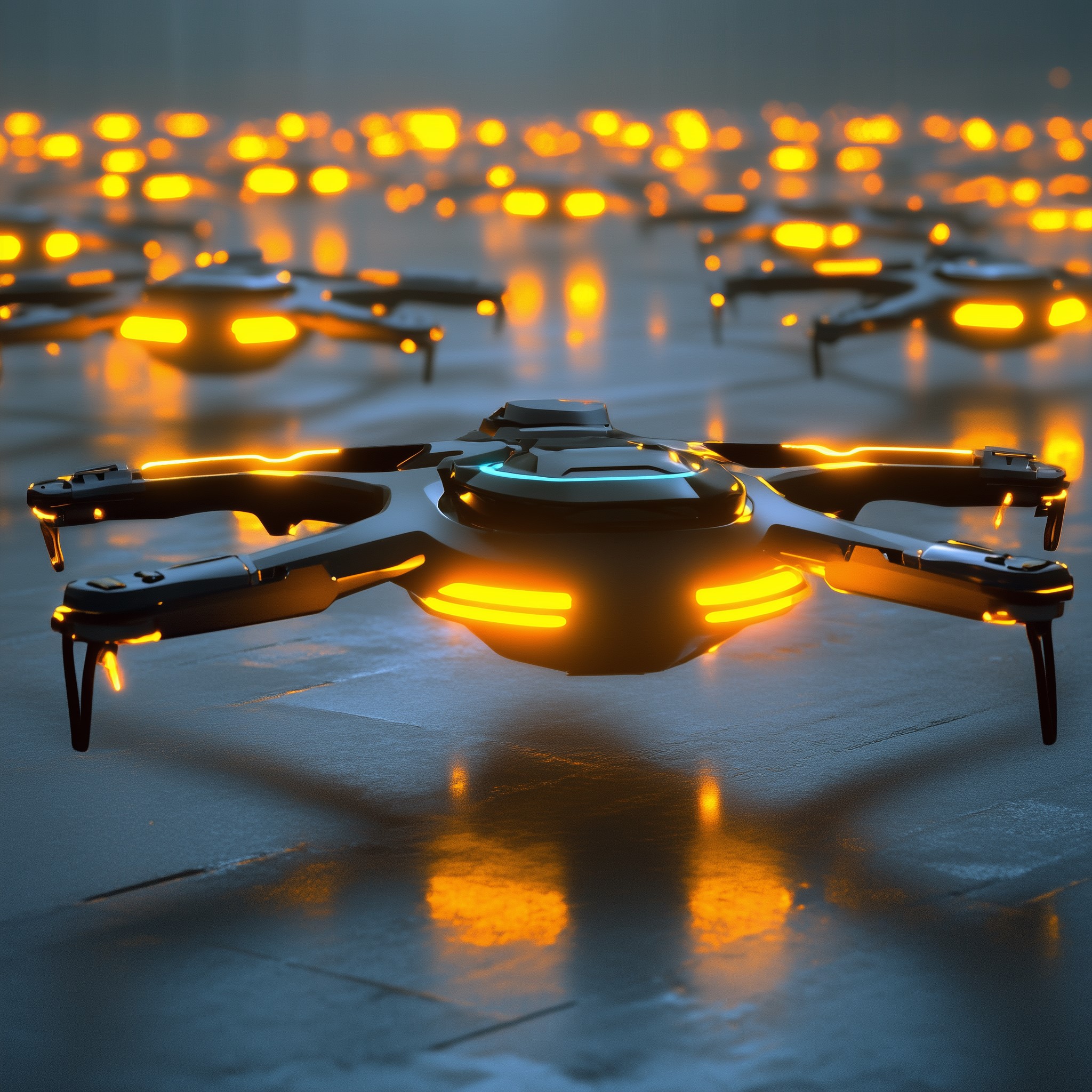Insider Brief:
- Researchers from Korea University and Sookmyung Women’s University introduced a framework combining quantum and classical computing to optimize multi-drone mobility control, addressing challenges like non-stationarity and scalability.
- The Quantum Multi-Agent Reinforcement Learning (QMDRL) framework uses quantum computing to handle complex many-body systems, improving the efficiency of multi-agent learning and decision-making in dynamic environments, such as drone fleets.
- A key feature of the QMDRL system is the data re-uploading technique, which encodes classical input data into quantum states, providing faster processing and more stable performance compared to traditional methods.
- While quantum computing shows promise in improving multi-agent reinforcement learning, current limitations like hardware constraints and qubit availability may hinder scalability until further advancements in quantum technology are made.
Managing fleets of autonomous drones in dynamic environments is highly relevant for industries such as logistics and defense, but it presents significant challenges—yet adapting traditional solutions to a quantum component may offer a solution. In a recent study presented at the Asia Pacific Wireless Communications Symposium, researchers from Korea University and Sookmyung Women’s University introduced a software framework that combines quantum computing with classical methods to optimize multi-drone mobility control through quantum multi-agent reinforcement learning, addressing key issues like non-stationarity and scalability in multi-agent environments.
The Connection Between Drones and Quantum Reinforcement Learning
Machine learning is a powerful tool that can be used for solving complex, real-world challenges. Adapting existing machine learning models to quantum technology can result in seeing a quantum advantage when the needs of the model align with the strengths of quantum computing. As noted in the study, one area especially suited for this adaptation is multi-agent reinforcement learning. Multi-agent reinforcement learning involves multiple agents learning to make decisions in an environment. The mission for these agents is to maximize cumulative rewards while adapting to changing conditions and interacting with other agents, which often makes these systems highly non-stationary and difficult to scale, just the type of multi-body problem that quantum technology is apt to handle.
To further qualify the complexity of multi-agent environments, the team highlights drone fleets as a key example. The difficulty for these multi-agent systems stems from the need to balance learning optimal policies, adapting to environmental changes, and coordinating effectively with other agents in the system. The study’s proposed QMDRL framework leans on quantum computing’s ability to handle many-body systems, offering a potential speed-up and reducing the complexity of training parameters. By combining quantum circuits and classical optimization through gradient descent, the system may improve the coordination and decision-making abilities of drone fleets in real-time.

Quantum Meets Classical in QMDRL Innovation
The presented quantum multi-drone reinforcement learning method is composed of a hybrid approach that integrates both quantum and classical computing to optimize multi-drone mobility control. As noted in the study, classical computing is well-suited for tasks like gradient descent optimization and managing the loss function, and is used in the training of drone agents. Meanwhile, quantum computing produces real-time action distributions for the drones through the quantum policy (Q-policy). According to the researchers, this dual approach provides substantial advantages in managing complex, multi-agent environments.
Quantum computing is particularly advantageous in reinforcement learning scenarios where multiple agents, such as drone fleets, must interact in dynamic environments. Traditional RL systems struggle with scalability and non-stationarity, often requiring significant computational power and large numbers of trainable parameters to function effectively. As the team’s research demonstrates, the use of quantum computing in the QMDRL framework reduces the number of parameters and increases computational efficiency. By using quantum circuits, the framework enables drones to better coordinate and respond to changes in their environment more quickly and with fewer resources.
Key to this efficiency, as outlined in the study, is the data re-uploading technique employed by the Q-policy. In this process, classical input data is encoded into quantum states, allowing the system to compute action distributions more effectively. The result is an exponential speed-up in processing compared to classical approaches, which translates into higher total reward values during training and more stable performance in real-time applications. Additionally, the QMDRL framework is equipped with a visual simulation software, which provides an interface for system designers to observe and analyze the drones’ decision-making processes. This feature, as highlighted by the team, supports in understanding how the agents interact and how well the RL algorithms perform, making it easier to fine-tune the system.
However, there are limitations to this approach. Quantum computing is still in its early stages, and hardware constraints such as the number of qubits available for computation may limit scalability. Furthermore, while quantum computing shows promise in handling certain types of problems more efficiently than classical systems, the researchers acknowledge that it may not yet be fully optimized for all aspects of multi-agent reinforcement learning. Future advancements in quantum technology, such as the development of more stable qubits and improved error correction, will be necessary to realize the full potential of QMDRL.
From Drones to Smart Cities
As quantum computing continues to evolve, its integration with reinforcement learning may provide improvements for optimizing multi-agent systems such as drone fleets. The visual simulation tools developed in this study not only contribute to the understanding of QMDRL but, according to the researchers, may also be applied to other types of multi-agent systems beyond drones, such as autonomous vehicles or smart city infrastructures.
The authors who contributed to the study include Soohyun Park, Gyu Seon Kim, Soyi Jung, and Joongheon Kim.
















